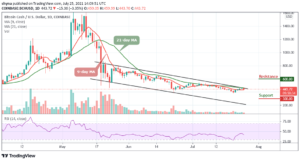A manufacturing company in Thailand is hoping to open up its factories to new visitors using VR technology
Quick read
➨ ASEFA, a manufacturer and provider of electrical switchboards in Thailand, wants to conduct digital tours
➨ The digital tours will be delivered via ASEFA’s website and VR headsets and software provided by telecommunications company dtac
➨ An average of 60 virtual visits per year will be supported
The story
The manufacturing sector is under significant pressure to digitally transform at a time when the coronavirus pandemic and resulting health measures are placing restrictions on factories. We dedicated an entire edition of VRWorldTech Magazine to the issues.
One manufacturing company in Thailand is hoping to overcome these issues by opening up its factories to new visitors using virtual reality (VR) technology.
ASEFA, a manufacturer and provider of electrical switchboards in Thailand, wants to conduct digital tours as a means to provide easy access to factories and ensure social distancing—all but eliminating the need for travel and in-person visits.
The digital tours will be delivered via ASEFA’s website and VR headsets and software provided by telecommunications company dtac.

They are aimed at prospective customers eager to inspect ASEFA’s capabilities before committing to a contract, as well as a new generation of talent such as engineers who are familiar with the technology and want to engage with a potential employer.
Expecting to support an average of 60 virtual visits per year, Wichai Soontornvutikul, executive director of ASEFA, says: “With this upgrade, we hope to see a 10% increase in visitors to the website and to the factory, expanding our reach to new audiences.”
This is a common use case for VR within manufacturing, with advances in 360° video capable of delivering a high-quality immersive experience above and beyond the standard 2D web pages so prevalent today.
It can help to sell ASEFA’s capabilities to prospective customers and employees, reduce the need for travel and in-person visits, and speed up the sales and recruitment processes, using hardware as relatively cheap and accessible as Meta Quest 2 (previously Oculus).

However, this is very much an early adoption by ASEFA and we wonder whether in-person visits should ever really be replaced by VR or other digital technologies within manufacturing, given the highly regulated nature of the sector.
With a target of only a 10% increase in visitors to the website and to the factory, it is clear that ASEFA is aiming to boost ‘footfall’ rather than replace in-person visits.
This should perhaps be an example that other mid-range manufacturing companies follow when deploying VR technology, at least for now: that it is an experiment with enhancement, rather than a rush toward replacement.
Let VRWorldTech Magazine know what you think via Twitter, LinkedIn, Facebook or editor@vrworldtech.com.
Don’t forget to read the latest issue of VRWorldTech Magazine. And never miss an issue again by picking up a subscription today.
Images: dtac
Source: https://vrworldtech.com/2022/01/05/manufacturing-should-use-vr-to-enhance-rather-than-replace/- "
- access
- Adoption
- Aiming
- animation
- audiences
- auto
- average
- border
- Common
- Companies
- company
- contract
- Conversation
- Coronavirus
- Coronavirus pandemic
- Customers
- delivering
- deploying
- digital
- Director
- Early
- employees
- Engineers
- example
- executive
- Executive Director
- expanding
- expects
- experience
- experiment
- factory
- follow
- Hardware
- Health
- help
- hoping
- HTTPS
- immersive
- Increase
- issues
- IT
- Manufacturer
- manufacturing
- Manufacturing sector
- Meta
- open
- Other
- pandemic
- perhaps
- pressure
- provide
- provider
- quest
- Reality
- recruitment
- reduce
- replace
- rush
- sales
- sell
- So
- Social
- Software
- speed
- subscription
- support
- Talent
- Target
- Technologies
- Technology
- telecommunications
- Thailand
- time
- top
- tours
- Transform
- travel
- Virtual
- Virtual reality
- vr
- VR headsets
- web
- Website
- What
- WHO
- within
- year



